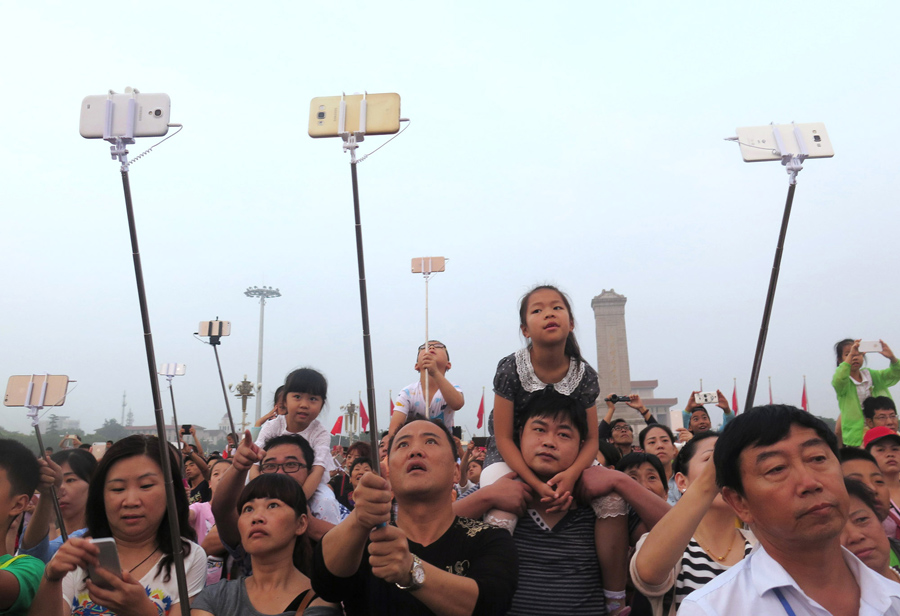Return to theme’s Table of Content
Blaise Tobia is a visual artist working primarily with photographic imagery. His main subject matter is global urban landscape and material culture. He has long been involved with digital imaging technologies, making his first computer-based visual work in 1983 and curating several exhibitions of digital work in the 1990s. As a professor of art at Drexel University in Philadelphia, he introduced digital online book printing to the curriculum soon after it became widely available in 2002. He was the author, in 2006, of the entry on digital photography in the Routledge Encyclopedia of 20th Century Photography.
Digital technologies are highly fluid. Like fluids, they can morph continuously and function as great levelers. Once a medium is subsumed digitally it becomes simply one variant among many, and works become endlessly malleable and reproducible. In the case of the two mediums of concern in this essay – the digital photograph and the digital book – only the slightest variation in binary code differentiates them as they are stored, manipulated, and distributed electronically. And, if we consider only screen-presented photos or books, these observations are definitive.
However, if we also consider digital photos and books that are produced in printed form, there are some additional, not purely digital, technologies required, involving paper, inks or toners, cutting and binding. But even these do not approach the complexity and levels of specialization that were needed for analog photography: selecting a film, exposing it properly, processing it and making prints (using chemicals, darkrooms, enlargers), or for lithographically-produced photographic books: making color separations, setting type, making plates, operating a sophisticated press, cutting, and binding. Each of these was comprised of its own distinct set of technologies with many sub-specialties, and there was little overlap between them.
This observation could easily be extended beyond these two mediums. A relatively small, inexpensive digital device can now do, at remarkably high quality, the work of many once-expensive individual tools: a still camera (and viewer/editor), a video camera (and viewer/editor), an audio recorder (and mixer/editor), a calculator, even a compass, level and flashlight. (And these are in addition to its other functions of communications, research, and entertainment.) The sound quality of my cell phone’s audio recorder (an almost “throw-away” inclusion) is far better than the sound quality of my very large reel-to-reel tape recorder from 1970 (which, adjusted for inflation, had cost several thousand US dollars). The visual quality of its camera is better than all but the finest camera/35mm film combinations of that same year. I cannot yet design a photographic book on my cell phone, but I can do it on my only slightly larger mini-laptop computer.
Certainly, then, both the making of photographs and the making of digital photographic books have reached levels of accessibility that are astonishing by old standards. What are the ramifications? Without doubt, there are more—many, many more—photographs and photographic books being made. Even outside the purely digital realm, photo printing services and book printing services (such as Blurb, Lulu and Shutterfly) are flourishing. 1
Within the digital realm, the number of photos propagated by social media and online image-access systems (like Flickr or Instagram) grows exponentially. 2 The phenomenon of the “selfie” is well documented. Also easily observable among younger people is the phenomenon of using a cell phone as a ubiquitous tool for visual note-taking. I have seen my own students hold their cell phone up to the blackboard to capture a diagram I just drew and have seen them doing the same with paintings in a museum. 3 And, while these may principally be behaviors of non-professionals, they are also appearing among professionals. Indeed, the very concept of a “professional” may be in danger in the context of digital technology’s leveling and “democratizing” pressures.
A discourse that might be raised in contradiction to quantity and leveling tendencies is that of quality. Certainly there are photographs and photographic books being made today that are of distinctly higher quality—and possibly of higher value—than the vast majority of those produced. How can we distinguish among them? How can we find the more worthwhile examples? For tangible, printed objects, these tasks are at least within the realm of possibility. Some of us rely on arbiters such as curators, dealers, publishers, and critics, to make the sheer numbers somewhat less daunting; we may also cruise galleries, bookstores, and certain favored online sources. For purely digital photographs and books, such as eBooks, the possibilities are literally endless. Consequently, the chances of quality work gaining a broad audience are quite miniscule. The concept of individual authority—in the making of creative works and in their propagation—has been heavily promoted as an advantage of digital technologies, largely by the providers of production and access, but the reality is a pale reflection of the promise. Now, each producer is in direct competition with every other comparable producer in the entire technologically enabled world.
While many photographic books are being published, whether online or through traditional means, one is compelled to ask: are they being purchased, or even looked at? The costs and other obstacles to book production have been reduced, especially for small runs done digitally, but the obstacles to distribution and sales have, if anything, been increased. The number of brick-and-mortar bookstores is in steep decline. 4 Book publishers have become extremely selective and the waiting time for publication of an accepted book can reach five years or more. In the case of high-quality photography books, there is the issue of “subvention” (the cost of printing—typically in excess of $20,000 USD) that is usually passed on to the artist/author. Online distributors, especially Amazon, cut prices, subsequently reducing the payments to publishers and authors to a minimum (often less than the production cost of the book). 5 Online bookstores for self-publishing authors (such as Blurb’s) have had mixed results; in any case, they require a tremendous amount of attention on the part of the author. Success for the self-publishing and self-promoting artist via digitally enabled technologies of production and distribution is a chimera, a reality realized by only a few.
Of greater concern to me, however, is the question of relevance. This supersedes the questions of production and distribution, the survival of professions, or even the concept of quality. It is my observation, echoed by many, that easy accessibility and excessive accumulation tend to foster distraction and, eventually, disinterest. How many of the billions of photos made each day are ever actually looked at again? To what extent has the shooting and subsequent uploading of images become simply a ritualistic behavior? Perhaps this is somewhat less of an issue for photographs (and photography books) of high quality and/or relevance, but even these are subject to the human behavioral rules of response to overabundance.
Digital photography and the digital production (and sometimes distribution) of photography books are wonderful tools available to huge numbers of users. But the leveling of difference that they engender and the over production that they encourage pose potentially existential questions for the mediums that they embody.
- The number of photo prints made worldwide continues to grow, but the rate of increase has nearly leveled off. Online printing services have largely replaced locally accessed services. Online book printing and related services, such as greeting cards, posters, etc., continue to grow at a rapid pace. (http://petapixel.com/2013/07/25/digital-photo-printing-10-years-after/) ↩
- One estimate of photos uploaded in 2014 was 1.8 billion (thousand million) per day. (http://www.businessinsider.com/were-now-posting-a-staggering-18-billion-photos-to-social-media-every-day-2014-5) ↩
- When my art historian colleague asked a young person who had just taken a cell phone photo of Rembrandt’s The Night Watch in the Rijksmuseum after having spent only a few seconds in proximity to the painting, why he hadn’t spent more time actually observing the marvelous object that was directly accessible to him, his response was that he preferred doing in-depth looking via cell phone photos at a later time. When viewed on a cell phone screen, The Night Watch is far from a marvelous object with an imposing presence. Instead it is rendered like every other image seen on that screen. This might perhaps be considered a kind of democratizing process. ↩
- The number of bookstores in the U.S. has declined by about a quarter since its peak in 1997. (<http://oedb.org/ilibrarian/12-stats-on-the-state-of-bookstores-in-america-today/>) ↩
- This is a personal example: a book that I self-published in 2007, in expectation of acquiring a distributor, cost about $20 USD per copy (in a run of one-thousand). My share per book sold on Amazon is, at best, about $18 USD, depending on ancillary charges. ↩





